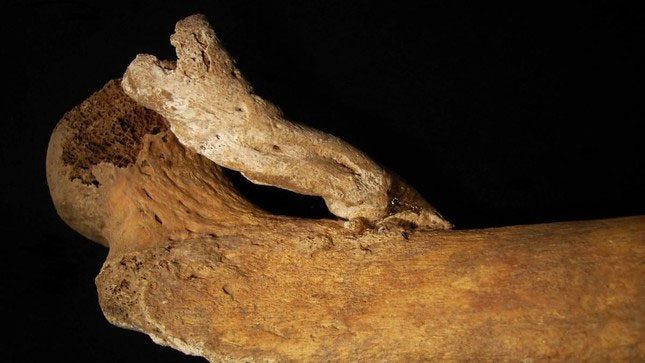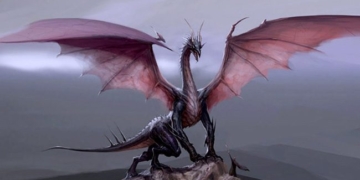Anthropologists in Portugal have discovered a rare and horrifying bone growth protruding from the femur of a woman who lived between the 14th and 19th centuries, following a severe injury.
An 8cm tumor developed precisely at the site where an internal thigh muscle connects to the femur, which could have caused the woman significant pain, weakness, and severely impaired mobility.
Rare Bone Growth

The bone mass with an 8cm tumor growing precisely where the pectineus muscle attaches to the femur could have caused the woman severe pain.
The lead author, Sandra Assis, a biological anthropologist at NOVA University Lisbon, Portugal, stated: “I have never seen such a large, strange bone formation. I am truly fascinated by its shape.”
According to a study published in the International Journal of Paleopathology, the giant bone mass “resembles a rope” and may have formed on the woman’s femur due to severe muscle trauma.
Researchers suggest that this could be a rare form of bone growth known as traumatic myositis ossificans, which can develop following a single traumatic incident or after multiple minor injuries.
Archaeologists unearthed the skeleton of the disabled woman at the ancient cemetery of São Julião Church in Constância, Portugal, in 2002. They discovered this skeleton among 106 adults and 45 children who lived between 600 to 200 years ago.
Although incomplete and missing the left femur, the skeleton of this woman was well-preserved, indicating that she was approximately 1.54 meters tall and over 50 years old at the time of her death.
The archaeologists found the woman lying on her back, with her hands resting on her pelvis, a coin on her left forearm, and her head tilted to the right.
Assis noted that researchers later discovered the protruding bone mass while cleaning the skeleton in the laboratory. They found no fractures in the woman’s femur and remain uncertain about the cause of the tumor’s growth.
They concluded that the injury had occurred 6 weeks to a year before the woman died, which would have prevented her from engaging in any vigorous movements or heavy lifting.
The horrifying protrusion likely developed after a traumatic incident that paralyzed a muscle in her inner thigh. This is the first time paleopathologists have recorded a case of this rare bone growth known as myositis ossificans, affecting the pectineus muscle.
“The appearance of the femur indicates a long process,” Assis said. “We do not have the medical records of this woman, but looking at similar clinical cases, we can assume that the femur injury left her weakened.”
Today, surgery can remove bone spurs, but it was not an option back then.


















































